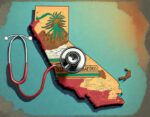Register as a Stem Cell Donor and Save Someone’s Life
Vivek Kumar seen here with his son, encourages his fellow Indians to register as potential stem cell donors. He registered and, later, donated his stem cells to a woman in India. Vivek holds a masters degree in business from Kellogg School of Management, Northwestern University.
By Sally Douglas Arce
Indians, who are diagnosed with leukemia and other blood cancers, face challenges. Finding a match and, then, receiving a stem cell transplant is one of the only treatments to extend or save these patients’ lives. Indians are severely under-represented as stem cell donors.
Seventy percent of the time, a stranger of your same ethnic background will be your stem cell match. Proportionally, there are more whites than Asians/Pacific Islanders on the Be The Match national registry.
“What’s the solution?” asks Carol Gillespie, the executive director of the Asian American Donor Program (AADP), a nonprofit in Alameda, CA. “It’s to encourage more Indians and ethnically diverse people to register as potential stem cell donors.”
Joining Be The Match means volunteering to be listed as a potential blood stem cell donor, ready to save the life of any patient anywhere in the world who is in need of a transplant.
AADP is currently working with Veer, a 3-year-old Indian boy who lives in Canada and Layla, a 2-year-old Indian girl who lives in the UK. Both need to find a stem cell donor to extend their lives.
For Vivek Kumar, who is originally from Mumbai, within a few years of his registering as a donor, he was told he was a stem cell match for a woman in India.
“I was literally the only person in the world who matched her,” Vivek says. “We were genetic cousins of sorts. I was committed give her my stem cells.”
To his fellow Indians and people of color, Vivek says, “Don’t hesitate to register. All it takes is a simple swab of the inside of your cheek. Why wouldn’t you want someone with a blood cancer to live several more years? Then, they could engage in personal goals or hobbies, see their two-year-old become a teen, or see their kids graduate.”
During donation, stem cells are removed from your blood stream. You are completely awake and usually watching a movie or two. The donation process takes four to five hours.
The coronavirus has had a dismal impact upon patients diagnosed with blood cancers like leukemia and lymphoma, and other illnesses treatable by a stem cell transplant. Blood cancer patients are afraid that a life-saving donor will not be found in time. They are scared that if a matching donor is found, that person, because of COVID-19, will not want to go to a clinic to have their stem cells collected.
“With the coronavirus pandemic our community education and awareness programs, which generate new registered donors, are suffering and blood cancer patients are worried,” Gillespie says.
Vivek poses the question: What if this was someone in your family and a potential donor was hesitating to register?
“Donating was a few days of inconvenience,” he said. “How can you compare that with the impact of saving a life? We can each do our own part.”
Join the registry by texting AADP to 61474 – Or, visit AADP
Visit AADP’s Instagram page for upcoming Live Interviews. AADP hosts special events.


